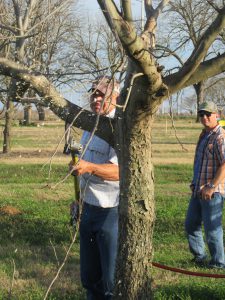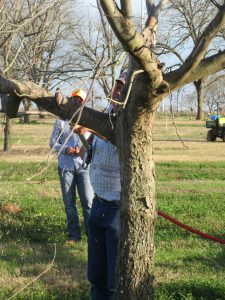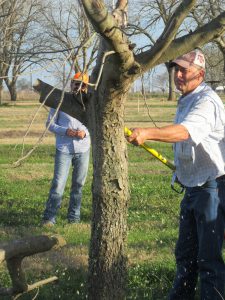There are a number of reasons to remove large limbs from mature trees. The three most common reasons are to either remove dead wood, to keep limbs from interfering with one another and rubbing or growing together, or to keep the tree from having narrow crotch angles. (“Narrow crotch angle” is not a very charming phrase, but it simply refers to branches that grow at angles less than 45° relevant to the trunk.)
Removing tree limbs larger than four inches in diameter should be done with care. Three cuts per limb are often needed to avoid tearing the bark down the side of the tree’s trunk.
- Make the first cut on the underside of the branch about 18 inches from the trunk. Undercut one-third to one-half way through the branch.
- Make the second cut on the topside of the branch an inch further out on the branch; cut until the branch breaks free.
- Before making the final cut, identify the branch collar. The branch collar grows from the stem tissue around the base of the branch. Make pruning cuts so that only branch tissue (wood on the branch side of the collar) is removed. Be careful to prune just beyond the branch collar, but don’t leave a stub.
It is important to take your time whenever working with power equipment and trees in your landscape. You usually only have one chance to get the cut right and you don’t want to injure yourself or ruin your tree.
- Crabgrass and Summer Annual Weed Control - February 15, 2024
- Twig Pruners and Girdlers - December 7, 2023
- Screen Trees for Privacy and Noise Reduction - October 13, 2023




